Crisis in Bophuthatswana: A look at Apartheid South Africa 1989-1994
The fifth and final section of AM’s Apartheid South Africa resource covers the years 1989 to 1994, when South Africa’s longstanding system of government based on racial discrimination – which had seemed unassailable until less than a decade previously – was rapidly dismantled, and free elections led to Nelson Mandela and the African National Congress (ANC) taking the reins of power.
These UK government files from the Foreign Office and Prime Minister’s Office examine a period in which political change was both profound and more peaceful than even many seasoned observers expected. But South Africa did not escape violence during its political transition, one episode of which serves as an interesting example of the political difficulties four decades of National Party rule had created.
South Africa’s first free, non-racial elections were scheduled for April 1994. Before the poll could be held, it was necessary to reincorporate into South Africa the ‘homelands’ or ‘Bantustans’, nominally independent statelets which the apartheid regime had allocated to various African ethnic groups to promote its ethos of ‘separate development’. The Bantustan system had very little popular support, but President Lucas Mangope of Bophuthatswana, homeland for the Tswana people, nevertheless set his face against reincorporation. In spite of a strike among Bophuthatswana’s public workers, supported by the ANC, Mangope announced on 7th March that the state would not participate in the elections and would remain independent. On the 10th, the British embassy in Pretoria sent a cable to London reporting that forty protestors had been injured by riot police the previous day and that ‘Bop’ was in danger of disintegration. The ambassador, Anthony Reeve, warned that discontent with Mangope’s stance had reached the police and armed forces.
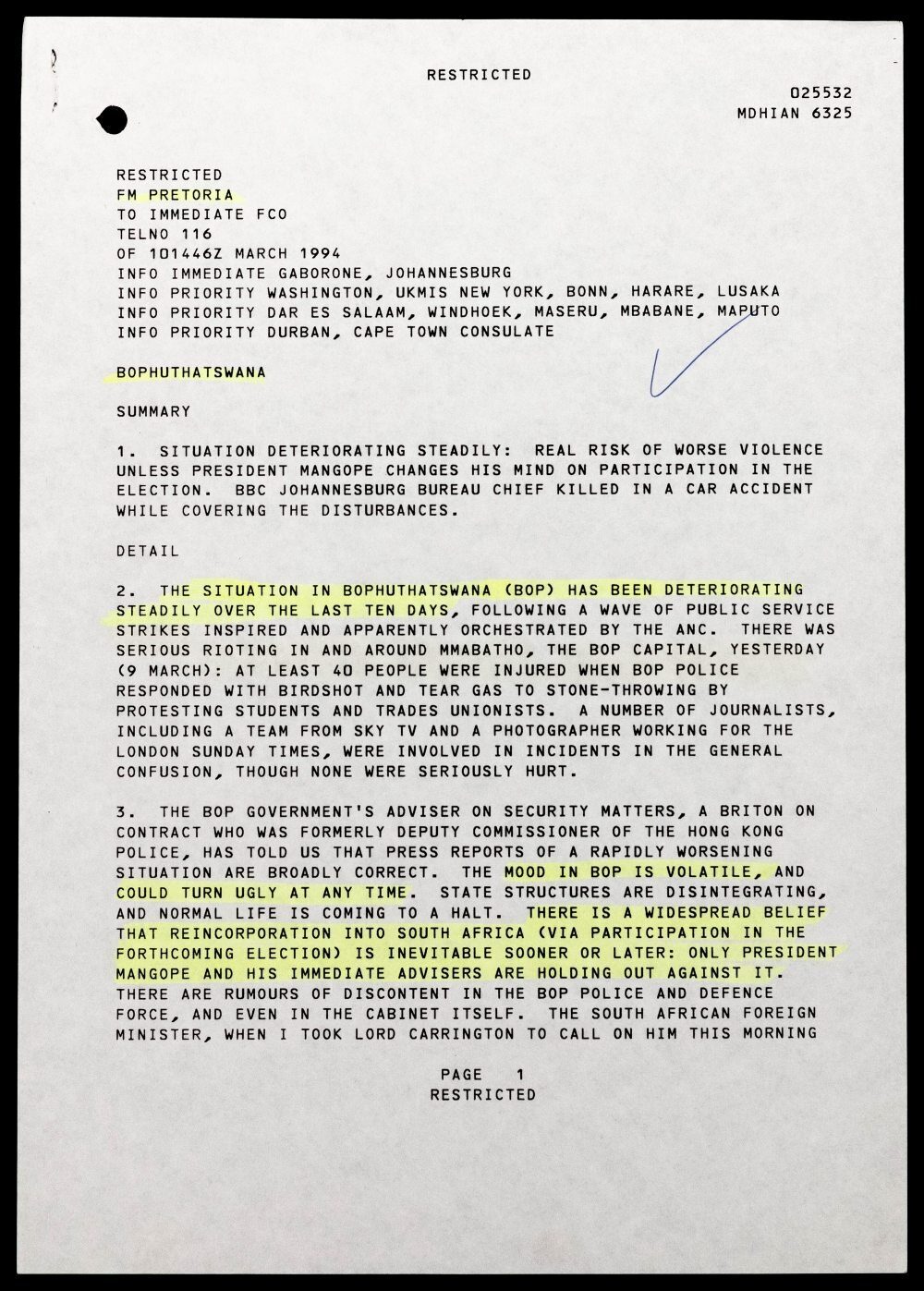
Part of tel. no. 116 (Anthony Reeve, HM Ambassador, Pretoria, to Foreign Office), 10th March 1994, from PREM 19/4997
Copyright notice: Images are reproduced by courtesy of The National Archives, London, England. www.nationalarchives.gov.uk
In fact, on the 8th Mangope had met General Constand Viljoen, former head of the South African Defence Force, and agreed that his Afrikaner-nationalist (and so pro-Bantustan) Volksfront militia should enter Bophuthatswana to maintain the status quo should Mangope’s own forces turn against him. A Volksfront contingent arrived in the capital, Mmabatho, early on the 11th, but the remaining Mangope loyalists were alarmed to see them accompanied by members of another white group even further to the right, the overtly neo-Nazi Afrikaner Resistance Movement (AWB). After clashes which included the shooting dead by a Bophuthatswana policeman of three armed AWB men who had been firing into crowds, the conflict gained another layer with the arrival in Mmabatho of a column of South African armoured cars. Since Pretoria was already intent on absorbing all Bantustans back into South Africa, the game was evidently up for Mangope, who duly announced that he would participate in the elections at the head of his own party, a move which British diplomats interpreted as an attempt to avoid losing face.
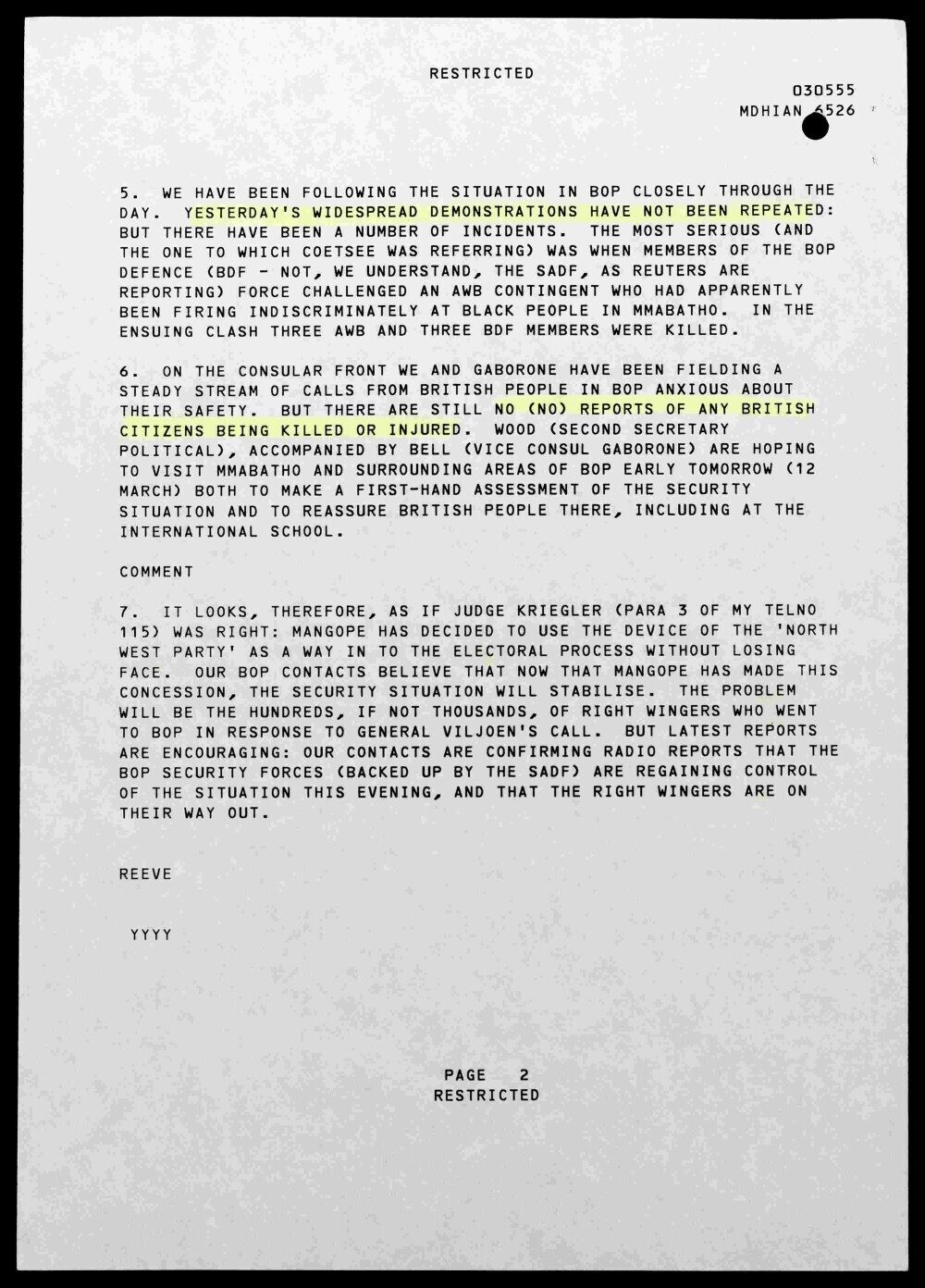
Part of tel. no. 118 (Anthony Reeve, HM Ambassador, Pretoria, to Foreign Office), 11th March 1994, from PREM 19/4997
Copyright notice: Images are reproduced by courtesy of The National Archives, London, England. www.nationalarchives.gov.uk
With the South African army now calling the shots, Mangope was effectively sacked the following day, when his assurances that he would indeed cooperate with the electoral process failed to convince the right people.
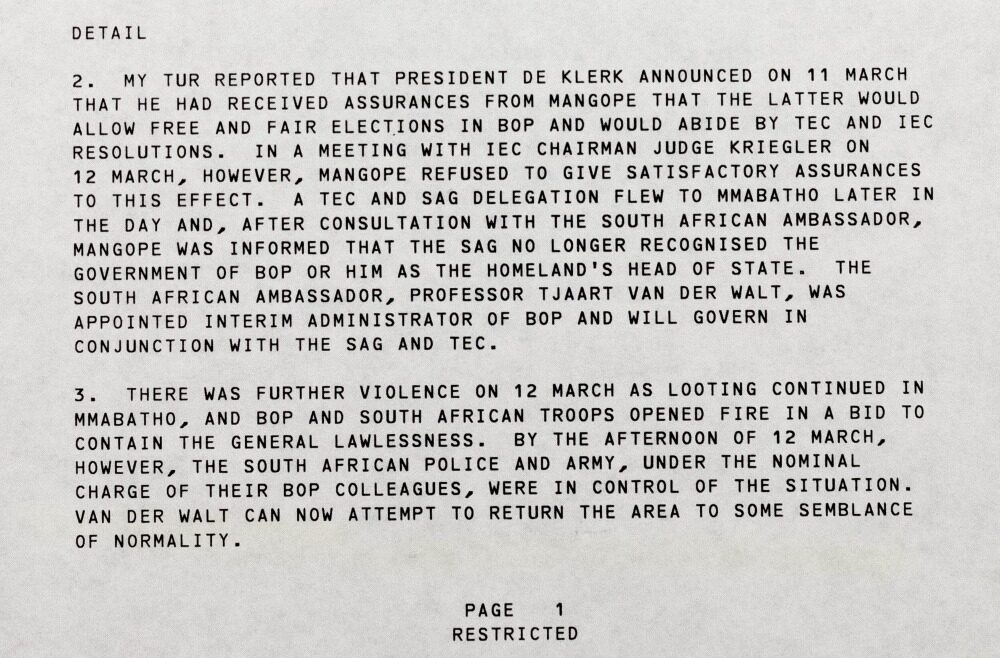
From tel. no. 120 (Anthony Reeve, HM Ambassador, Pretoria, to Foreign Office), 14th March 1994, from PREM 19/4997
Copyright notice: Images are reproduced by courtesy of The National Archives, London, England. www.nationalarchives.gov.uk
Bophuthatswana ceased to exist the following month, when its citizens followed most other South Africans in voting for Nelson Mandela and the ANC. Nevertheless, the events in Bophuthatswana in its final weeks serve as a snapshot of the complexities behind South Africa’s transition to democracy that the material in Apartheid South Africa so richly illustrates.
For more information about Apartheid South Africa, 1989-1994: Negotiation, Liberation and Democracy, including free trial access and price enquiries, please email us at info@amdigital.co.uk.
The document discussed in the article is PREM 19/4997, UK/South Africa relations: internal situation, part 30, which is available open-access for 30 days.
Recent posts
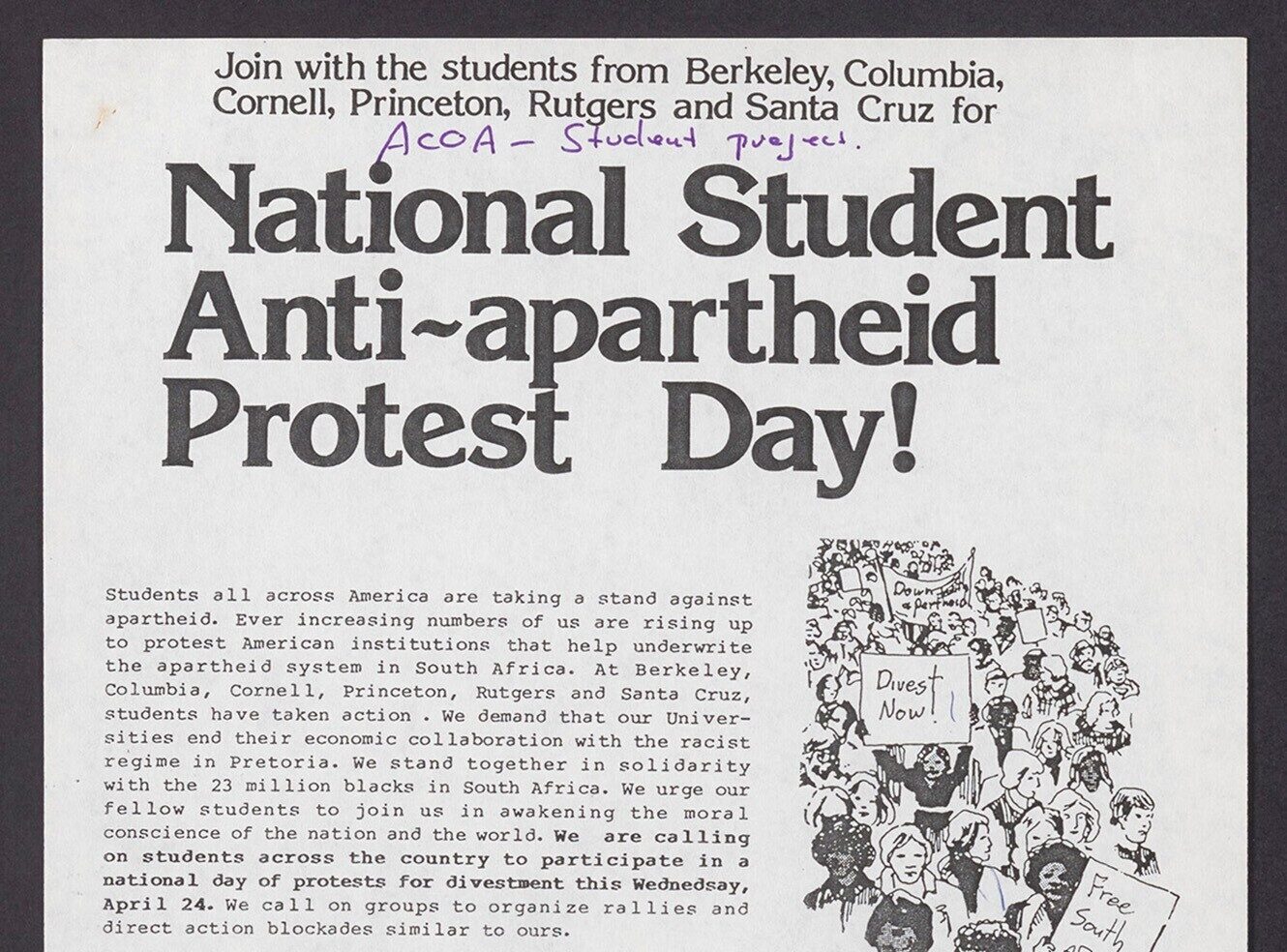
The blog highlights American Committee on Africa, module II's rich documentation of anti-apartheid activism, focusing on the National Peace Accord, global solidarity, and student-led divestment campaigns. It explores the pivotal role of universities, protests, and public education in pressuring institutions to divest from apartheid, shaping global attitudes toward social justice and reform.
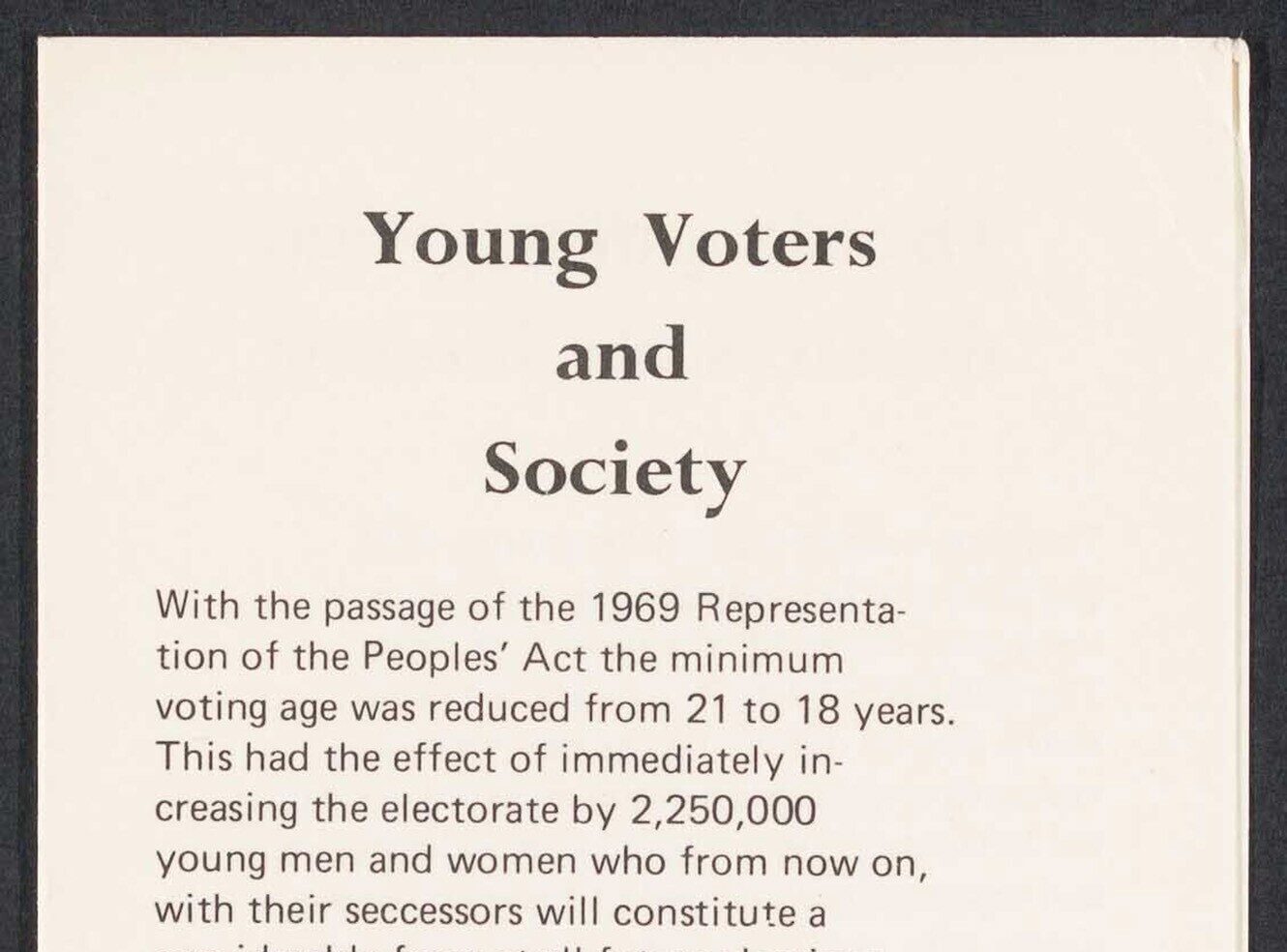
This blog examines how primary sources can be used to trace the impact of young voices on society, particularly during pivotal voting reforms in the UK and the US. Explore materials that reveal insights into youth activism, intergenerational gaps, and societal perceptions, highlighting their interdisciplinary value for studying youth culture, activism, and girlhood across history.
